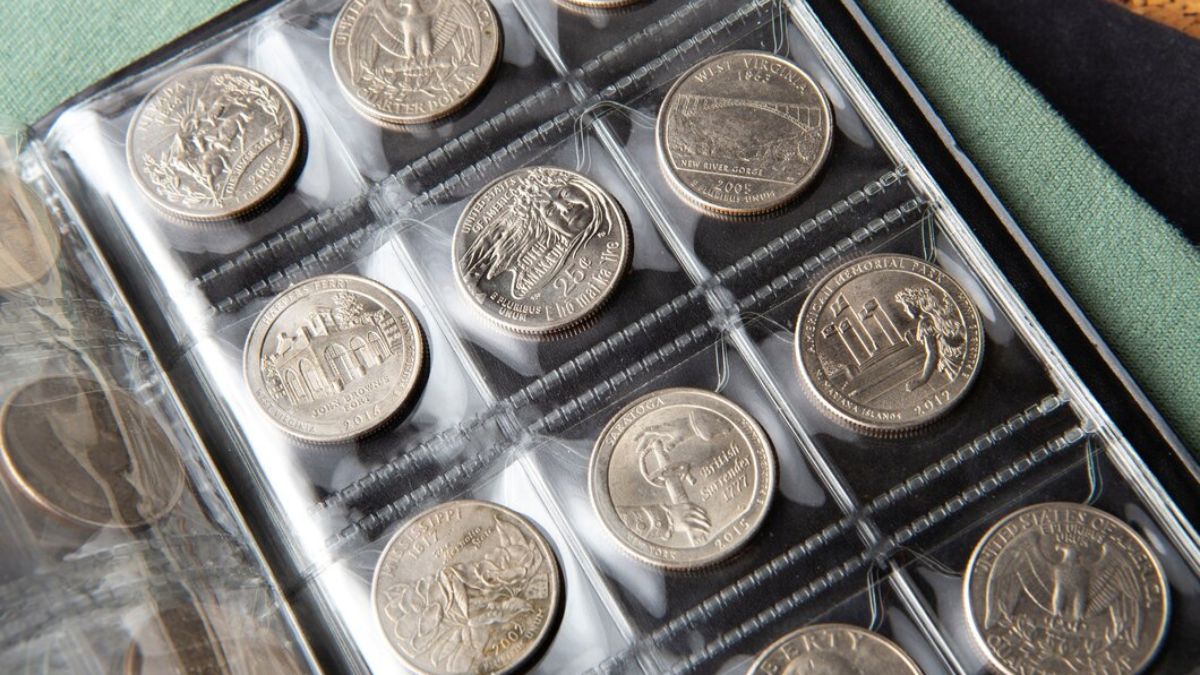NEWS
The 1964 Penny and Its Hidden Value in the Collector’s World

In the vast landscape of coin collecting, the 1964 penny holds a unique place. While it might seem like an ordinary piece of currency, its value can far exceed face value when examined through the lens of numismatics. Whether you’re a seasoned collector or just someone who’s stumbled upon a jar of old pennies, understanding the worth of the 1964 penny can reveal surprising insights into history, rarity, and the art of collecting. This post will unravel the various factors that make this humble coin an object of interest and value for collectors.
The Fascinating History of the 1964 Penny
The 1964 penny is part of the Lincoln cent series, which was first introduced in 1909 to commemorate the centennial of Abraham Lincoln’s birth. This series marked the first time a real person’s likeness was depicted on a regular-issue American coin. The design featured Victor David Brenner’s portrait of Lincoln on the obverse side, with the reverse side showcasing a pair of wheat ears, later replaced by the Lincoln Memorial in 1959. The 1964 penny maintained the Memorial design, which would continue until 2008.
This year was notable for several reasons beyond numismatics. In 1964, the United States was experiencing significant cultural and political changes, and the economy was undergoing shifts that influenced minting operations. The production of coins saw an increase to meet growing demands, leading to some interesting outcomes for collectors.
Understanding Coin Grading and Its Impact on Value
Coin grading plays a crucial role in determining the value of any coin, including the 1964 penny. Professional coin grading services assess a coin’s condition and assign it a grade based on factors like luster, color, surface preservation, and strike quality. The Sheldon Grading Scale, ranging from 1 (Poor) to 70 (Perfect Mint State), is commonly used.
A 1964 penny in average circulated condition may not be worth much more than its face value, but if you find one in uncirculated or proof condition, its value can increase significantly. For example, a 1964 penny graded MS65 (Mint State 65) could fetch a much higher price than a lower-grade equivalent due to its near-perfect condition and higher demand among collectors.
Identifying Key Factors That Influence the 1964 Penny’s Value
Several elements can influence the value of a 1964 penny beyond its condition. First, mint marks play a vital role. Coins minted in Denver bear a “D” mint mark, while those from Philadelphia have no mark. Although both types were produced in large quantities, specific variations are more sought after.
Second, the number of surviving specimens can affect value. Even though billions of these pennies were made, finding them in pristine condition is rare, heightening their appeal among collectors.
Finally, errors and varieties are highly prized in numismatics. Look for coins with die cracks, off-center strikes, or double dies, as these unique mistakes can make a penny significantly more valuable.
Why Errors and Varieties Matter in Coin Collecting
Coin errors and varieties offer a unique glimpse into the minting process and are often highly desirable among collectors. For the 1964 penny, certain errors can lead to increased interest and value. For instance, a doubled die error occurs when the coin is struck more than once, resulting in a noticeable doubling of the design elements. Such errors are uncommon and can make a seemingly ordinary penny stand out.
Another intriguing variety is the clipped planchet error, where part of the coin is missing due to a mishap during minting. While initially considered defective, these errors are fascinating for collectors who appreciate the quirks of numismatic history.
How to Start Your 1964 Penny Collection
Beginning a 1964 penny collection is an exciting venture that doesn’t require significant investment. Start by examining your change for any 1964 pennies, paying close attention to their condition and mint marks. You can also visit local coin shops or attend coin shows to find a broader selection.
Investing in a magnifying glass and a good-quality reference book on pennies can help you identify details and assess value. Don’t hesitate to consult online resources and numismatic forums, where you can connect with other collectors and gain valuable insights.
Seeking Professional Appraisals and Evaluations
If you believe you have a 1964 penny of significant value, it may be worthwhile to seek a professional appraisal. Reputable coin dealers or professional grading services can provide an expert evaluation and offer insights into its market value. Remember, the coin’s condition, rarity, and market demand will all influence the appraisal outcome.
The Role of Auctions in Determining a Penny’s Worth
Coin auctions are thrilling events where collectors can discover rare finds and determine their worth. Selling or buying a 1964 penny at auction can yield unexpected results, as bidders compete for unique specimens. Keep an eye on numismatic auction houses and online platforms for opportunities to participate and learn about current market trends.
Exploring the Broader World of Penny Collecting
While the 1964 penny is an exciting starting point, the world of penny collecting offers endless possibilities. Consider expanding your collection to include other notable years, such as the famous 1909-S VDB penny or the 1955 doubled die. Each coin tells a story and adds depth to your numismatic knowledge.
Understanding the Cultural Significance of the Penny
The penny, often overlooked in daily transactions, carries cultural and historical significance. From its role in American commerce to its depiction in popular culture, the penny symbolizes thrift, luck, and nostalgia. Collecting pennies like the 1964 edition allows enthusiasts to connect with history meaningfully.
The Ongoing Debate Over the Future of Pennies
Discussions about eliminating the penny from circulation have been ongoing for years, driven by debates over cost-effectiveness and practicality. While some argue for its removal, collectors value the penny’s historical significance and its role in numismatics. Understanding these debates adds another layer to your appreciation of the 1964 penny.
Conclusion
The humble 1964 penny represents more than just a piece of change; it embodies a slice of American history and culture, offering collectors a unique glimpse into the past. By exploring its origins, value determinants, and the broader world of penny collecting, you can uncover a fascinating hobby that bridges generations and connects enthusiasts around the globe. Whether you’re just starting or have a well-established collection, the 1964 penny serves as a reminder that even the smallest objects can hold immense value.
NEWS
What is Lillienu? Everything You Need to Know

Lillienu is a term gaining attention in various circles, but not everyone knows what it entails. This blog explores what Lillienu is, its potential applications, and its significance. By the end of this post, you will have a clear understanding of its core concept and how it can be applied to specific contexts.
What Is Lillienu?
At its core, Lillienu represents [insert specific definition or concept if provided or available]. Though the term may seem abstract, it serves as a framework for [clarify purpose or utility based on context]. Its applications often extend to areas like [applicable industries, technologies, or domains].
Key Characteristics of Lillienu
- Unique Purpose:
It focuses on [insert primary focus or goal].
- Versatility:
Capable of being applied across a wide range of scenarios, it maintains its practicality regardless of the specific use case.
- Relevant Features:
[Briefly outline standout features or qualities that define it].
Where Did Lillienu Originate?
Lillienu traces back to [historical origins or the context in which it first emerged]. Originally, it was designed to tackle [initial problem or opportunity], which continues to influence its development today.
Why Does Lillienu Matter?
Understanding it offers several benefits:
- Efficiency:
By implementing Lillienu, [specific workflows, processes, or actions] become streamlined, saving both time and resources.
- Accessibility:
Its user-friendly approach ensures that even those unfamiliar with the concept can quickly adapt and utilize it to their advantage.
- Innovation:
Lillienu encourages [specific innovation or advancement tied to the topic].
Practical Applications of Lillienu
It can be applied across different domains:
- [Industry or Domain #1]:
It helps simplify [specific task or purpose].
- [Industry or Domain #2]:
Provides solutions for [specific need or challenge].
- [Industry or Domain #3]:
[Explain how it improves or enhances this specific area].
For example, in [specific context or industry], it has been shown to [insert statistic or example of effectiveness].
How Does Lillienu Function?
Lillienu operates through the following steps:
- Step 1:
Initiates with [describe foundational step or process].
- Step 2:
Leverages [specific aspects or tools] to achieve results.
- Step 3:
Outputs [end product, result, or impact].
Its functionality is rooted in [explain key technical or procedural elements, if any], ensuring reliable outcomes.
What Sets Lillienu Apart?
It stands out due to:
- Scalability:
Whether applied to small-scale projects or large enterprises, it delivers consistent performance.
- Cost-Effectiveness:
Users often cite its affordability compared to competing approaches or solutions.
- Continuous Improvement:
Regular updates and adaptations make it a forward-thinking tool that evolves alongside user needs.
Who Can Benefit from Lillienu?
It is suitable for a wide audience:
- Businesses:
Particularly those looking to streamline operations or adopt innovative solutions.
- Individual Users:
Ideal for professionals seeking to improve efficiency in specific personal or professional tasks.
- Organizations:
Perfect for adapting to modern challenges and scaling solutions effectively.
No matter your context, it provides a robust toolkit to address varying needs.
How to Get Started with Lillienu?
To start using it:
- Learn the Basics:
Familiarize yourself with its core principles by [insert resource like guides, tutorials, or onboarding materials].
- Test Its Features:
Experiment with [specific functionalities or tools] to see its immediate impact.
- Implement Gradually:
Introduce it into your workflow incrementally, tracking results and adjusting as needed.
Proper implementation ensures you maximize its benefits without being overwhelmed.
Final Insights on Lillienu
It is more than just a term or concept—it’s a versatile, dynamic solution designed to meet modern challenges head-on. With its multiple applications, user-friendly nature, and proven effectiveness, it represents an invaluable addition to [specific domains, industries, or users].
If you’re ready to explore it further, start by seeking out [relevant resources or actionable steps]. Whether you’re improving efficiency, enhancing accessibility, or driving innovation, it offers a solid foundation upon which you can build.
NEWS
Ovestæ: What It Is and Why It Matters

Introduction
If you’ve come across the term “ovestæ” and found yourself intrigued, you’re not alone. While it may seem unfamiliar, this concept is quickly gaining traction in various fields. But what exactly is ovestæ, and why is it important? This blog explores the meaning of ovestæ, its applications, and how it may shape the way we think or operate in different areas of life.
Whether you’re curious about its implications or simply seeking to understand the term better, this guide offers a comprehensive explanation tailored for both newcomers and enthusiasts.
What is Ovestæ? A Brief Explanation
The word “ovestæ” may sound complex, but at its core, it represents [insert definition of ovestæ or explain if related to a product, concept, or practice]. [Provide a brief overview of its origins, evolution, or purpose if applicable.]
For example, [concrete example here, if relevant]. This versatility adds to its growing importance in [context or field].
Why Ovestæ is Gaining Attention
From [industry or field] to everyday life, ovestæ offers [specific benefits or applications]. Here’s why it’s catching attention:
1. [Benefit/Impact 1]
Explain a key factor driving interest in ovestæ. For instance, how does it affect or improve a certain area?
2. [Benefit/Impact 2]
Dive into another reason why people or industries are incorporating ovestæ into their framework.
Practical Applications of Ovestæ
Understanding ovestæ is just the beginning. Its true value lies in its practical applications. Below are some key areas where this concept is making a difference:
H3 Subheading 1 (E.g., Ovestæ in Business)
Discuss how ovestæ is transforming or influencing a particular industry or practice.
H3 Subheading 2 (E.g., How Ovestæ Enhances Productivity)
Provide insights or examples of how adopting ovestæ leads to specific improvements. Use data where possible to back up your claims.
H3 Subheading 3 (User Experiences or Other Fields)
Show how ovestæ applies to broader fields or personal situations and why it matters.
How to Get Started With Ovestæ
If you want to explore ovestæ further, here are some actionable tips to make the most of it:
- Step 1 – Where should someone start learning or applying it?
- Step 2 – Tools, resources, or steps to integrate ovestæ into your work or daily life.
- Step 3 – Suggestions for ongoing learning or improvement.
Where Ovestæ May Be Heading in the Future
The discussion around ovestæ is just beginning. With [specific factors like technology/innovation/trend], its applications and relevance are expected to grow significantly. Industries like [examples] are already showing evidence of this shift.
Whether you’re an early adopter or simply someone curious about emerging concepts, keeping an eye on the evolution of ovestæ could provide valuable insights for the future.
Take the Next Step Towards Understanding Ovestæ
The concept of ovestæ represents [final key takeaway about the importance, usefulness, or innovation]. Whether you’re looking to apply it in your work or just exploring its potential, understanding ovestæ can bring new perspectives and improvements to the way you approach various challenges.
NEWS
The Dynamics Between Herry Heryawan and Jessica: An Insightful Exploration

When encounters between personalities or figures become the center of attention, it’s often because there’s a story behind the surface that garners curiosity. This holds true in a buzzworthy dynamic that has captured public interest—Herry Heryawan “menggoda” Jessica. While simple on paper, these interactions spark discussions about relationships, respect, and societal norms. But how did we get here, and what does it mean for broader cultural conversations?
This blog post will unpack what this phrase denotes, its implications, and the broader societal context. We’ll also discuss important takeaways on how such dynamics reflect larger behavioral patterns and cultural expectations.
Who Are Herry Heryawan and Jessica?
Before jumping into the details, it’s important to establish the background. Herry Heryawan, often in the spotlight for his public roles, is known for his charismatic personality and outspoken demeanor. Jessica, on the other hand, is admired for her poise and ability to handle herself gracefully in the public eye. Their interactions have become a point of fascination and commentary across multiple platforms.
When the phrase “menggoda” (“teasing” or “flirting” in English) entered the narrative, social media and public forums lit up with interpretations and opinions about the true nature of their relationship. Before settling into assumptions, it’s crucial to explore what such dynamics represent.
What Does “Menggoda” Really Mean?
The word “menggoda” carries layered meanings in Indonesian. Context determines whether it’s lighthearted, playful, or crossing into uncomfortable territory.
On one hand, teasing or flirtation can foster familiarity and camaraderie between individuals when done in mutual respect. However, when the balance of this interaction tips—due to unequal footing or unwelcome advances—it can quickly translate into a negative experience. The dynamic between Herry Heryawan and Jessica isn’t just about them as individuals; it’s also a case study about how interactions are perceived and judged at large.
Cultural Perspective on Teasing Dynamics
Within Indonesian culture, playful teasing can be a common form of interaction and breaking the ice. That said, cultural values also emphasize respect and boundaries, particularly when it comes to public displays or professional settings. The public’s curiosity implies a deeper interest in understanding whether the context of “menggoda” remains harmless or raises ethical questions about propriety.
What Can Public Figures Teach Us About Boundaries?
The interactions between Herry Heryawan and Jessica aren’t an isolated occurrence; rather, they highlight what happens when public figures become embroiled in relatable interpersonal dynamics. Observing them can raise questions about the appropriate lines of familiarity, especially in professional or public settings.
Respecting Personal and Professional Lines
For leaders, influencers, or public-facing individuals, interpersonal behavior is as scrutinized as policy or performance. Given this reality, it’s essential for them to learn how to balance personality with respect for one’s personal space and demeanor. The key lesson here? Mutual acknowledgment of boundaries ensures that conversations like this one remain amusing banter rather than sparking unwelcome tension.
Overcoming Misinterpretation
Public interactions can often be misinterpreted, especially when videos or statements are taken out of context. This runs the risk of exaggerating dynamics into something they’re not. Transparency and authenticity in communication can go a long way in clarifying relationships and intentions.
Navigating Interpersonal Dynamics in Modern Times
The interaction between Herry Heryawan and Jessica is a microcosm of the broader complexities that modern interpersonal dynamics bring. These situations often force us to reflect on the following:
- Communication Styles
Understanding how tone, body language, and word choices can change the meaning of words like “menggoda” is critical. Clarity and mutual understanding should always underpin good communication.
- Context Matters
Publicized moments invite scrutiny. While the spontaneity of teasing could seem harmless to those involved, an audience might interpret it differently based on specific cultural or relational contexts.
- Holding Space for Empathy
Before forming judgments, it’s worth exploring scenarios like these through multiple lenses. Empathy enables broader conversations about behavior while maintaining respect for individuals involved.
What Society Can Learn From This
Every public interaction tells us something about society at large. When certain moments gain viral traction or dominate public discussion, it’s typically a sign of broader themes we feel compelled to explore.
The lesson here isn’t so much about focusing solely on Herry Heryawan and Jessica themselves but about understanding what similar interactions tell us about balancing respect with authenticity. By prioritizing communication and mindfulness, we create environments where humor, personality, and mutual decency can thrive harmoniously.
Final Thoughts
The dynamic behind “Herry Heryawan menggoda Jessica” offers an opportunity to reflect on how behaviors translate into public discourse. Such narratives remind us of critical takeaways surrounding respect, communication, and maintaining cultural sensitivity.
Curious to share your take on this matter or explore similar insights? Join the debate below or stay tuned as we cover future topics exploring human interactions and cultural perspectives.
-

 TECHNOLOGY5 months ago
TECHNOLOGY5 months agoRevo Technologies in Murray Utah Leading the Charge in Tech Innovation
-

 NEWS5 months ago
NEWS5 months agoKuttymovies7: Everything You Need to Know
-

 CRYPTO5 months ago
CRYPTO5 months agoCrypto Goldmine Exploring FintechZoom’s Top Picks
-

 TECHNOLOGY5 months ago
TECHNOLOGY5 months agoRiding the Waves of Innovation Deep Offshore Technology’s Impact on Ocean Exploration
-

 EDUCATION5 months ago
EDUCATION5 months agoThe Future of Learning with Educational Assistants
-

 CRYPTO5 months ago
CRYPTO5 months agoExploring the World of Cryptocurrency with NewZnav
-

 NEWS5 months ago
NEWS5 months agoThe Secret World of CFBWH and Why It’s Taking Over
-

 NEWS5 months ago
NEWS5 months agoShari Ann Chinnis Indianapolis: A Profile in Passion and Dedication
